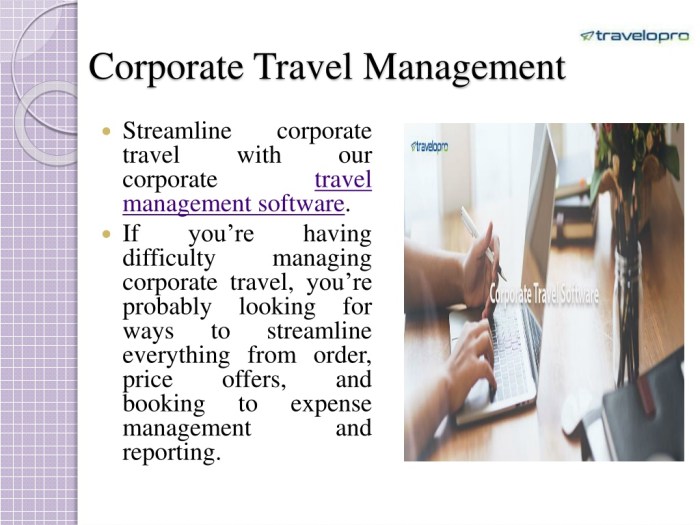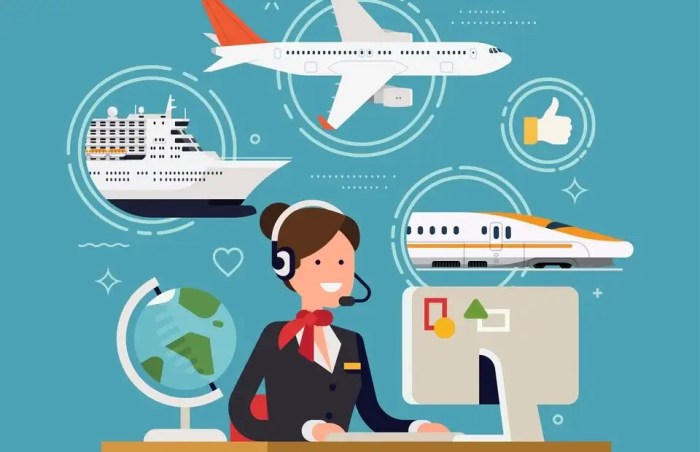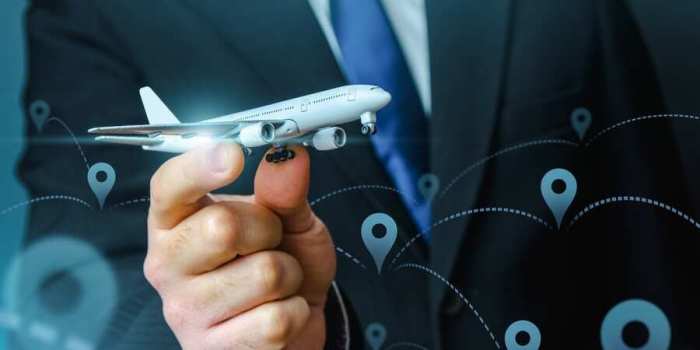Small Business Travel Management A Guide
Small business travel management is crucial for efficiency and cost-effectiveness. It encompasses a wide range of activities, from defining clear policies to leveraging technology for seamless bookings and expense reporting. Effective travel management isn’t just about booking flights and hotels; it’s about optimizing the entire process to enhance productivity, improve employee satisfaction, and ultimately, contribute to the growth of the business. This guide explores essential strategies, tools, and best practices to help small businesses navigate the complexities of travel.
This comprehensive guide covers everything from defining a robust travel policy to streamlining expense reporting. We’ll delve into the unique challenges faced by small businesses, exploring innovative tools and technologies to help optimize their travel operations. The guide also touches on the critical aspect of staff training and support, enabling employees to manage their travel seamlessly while adhering to company policies.
Defining Small Business Travel Management
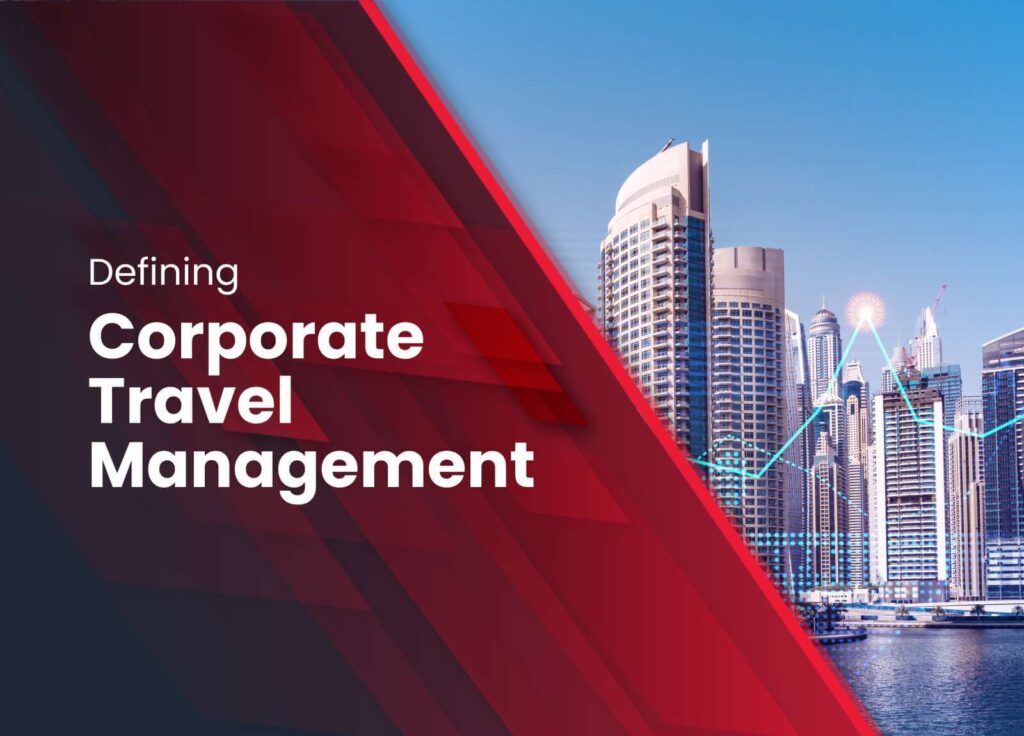
Small business travel management is a specialized area focused on optimizing travel arrangements for companies with fewer than 250 employees. This often involves a more hands-on approach compared to larger enterprises, where travel policies and processes are often more standardized and complex. It’s crucial for small businesses to efficiently manage travel expenses and ensure their employees have the resources they need to conduct business trips effectively.
Small business travel management differs significantly from large enterprise travel management in scope and resources. Large enterprises often have dedicated travel departments with sophisticated software, extensive travel policies, and a large team to handle complex itineraries. Conversely, small businesses typically rely on a smaller team, possibly even a single individual, to manage travel arrangements, often using simpler tools and less structured policies. The key difference lies in the scale and complexity of operations.
Challenges in Small Business Travel Management
Small businesses face numerous challenges in managing travel. Limited resources, including personnel and financial constraints, often make it difficult to implement sophisticated travel management systems. A lack of dedicated travel expertise can lead to inefficiencies and higher costs. The need for flexibility and adaptability to changing business needs is also a significant hurdle. Additionally, keeping track of expenses and adhering to policies can be difficult without the proper tools and training. These challenges highlight the importance of streamlined and cost-effective travel management solutions.
Pain Points for Small Business Travel Managers
Common pain points for small business travel managers include the time-consuming nature of manual travel arrangements, the difficulty in tracking and managing expenses, and the potential for errors and omissions. Finding reliable and affordable travel booking solutions can be challenging, and maintaining compliance with company policies and regulations can also be a source of frustration. Further, coordinating travel arrangements with other employees and stakeholders, especially when dealing with tight deadlines, can be problematic. These pain points underscore the need for a dedicated and intuitive system to manage travel efficiently.
Core Components of a Small Business Travel Management System
A well-designed small business travel management system should address the key needs of the organization. The following table Artikels the core components necessary for effective travel management.
| Component | Description |
|---|---|
| Booking Engine | Provides a platform for searching, comparing, and booking flights, hotels, and other travel arrangements. |
| Expense Reporting | Allows for easy and accurate tracking and reporting of travel expenses, ensuring compliance with company policies. |
| Policy Management | Provides a centralized repository for travel policies, guidelines, and procedures, helping to ensure consistency and compliance. |
| Reporting & Analytics | Offers insights into travel patterns, cost analysis, and compliance with policies, enabling data-driven decisions. |
| Mobile Accessibility | Enables managers and employees to access and manage travel arrangements from anywhere, anytime, using mobile devices. |
Tools and Technologies for Small Business Travel
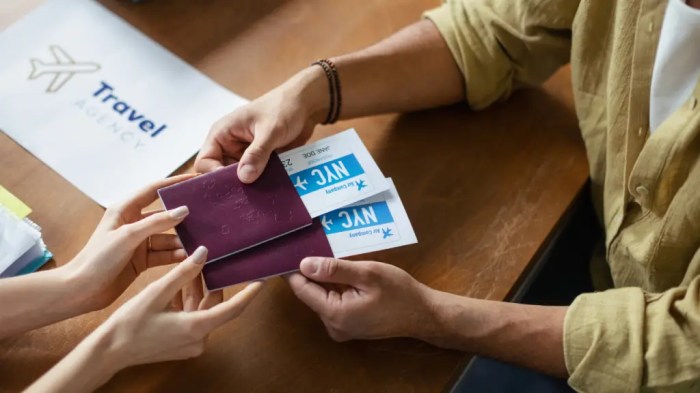
Source: smallbiztrends.com
Small businesses often face challenges in managing travel efficiently, from booking flights and hotels to tracking expenses. Effective travel management tools streamline these processes, saving time and money while enhancing employee experience. These technologies offer a range of features, from automated booking to sophisticated reporting, catering to diverse business needs.
Travel management solutions provide substantial benefits to small businesses. They reduce administrative burdens, ensuring accurate and timely bookings. Automated expense reporting and robust analytics offer invaluable insights into travel spending, enabling businesses to optimize their travel budgets.
Various Travel Management Tools and Technologies
A variety of tools and technologies are available for managing small business travel. These range from basic online booking platforms to comprehensive travel management systems. Understanding the different options and their functionalities is crucial for selecting the right solution.
- Online Booking Platforms: These platforms allow for direct booking of flights, hotels, and other travel arrangements. They typically offer basic functionalities like searching and comparing prices across different providers. Their ease of use and often free or low-cost subscription models make them attractive to small businesses. However, they may lack advanced features like robust reporting or expense tracking, which could be a limitation for complex travel needs.
- Travel Management Systems (TMS): TMS are more comprehensive solutions designed for managing all aspects of business travel. They often integrate with existing accounting systems, offering automated expense reporting and sophisticated analytics. TMS usually comes with more advanced features but is typically associated with higher pricing compared to online booking platforms.
- Travel Agencies and Consultants: Specialized travel agencies or consultants can handle all travel arrangements for a small business. This option is especially beneficial for businesses with infrequent or complex travel needs. While providing personalized service, travel agencies may come with a premium price tag. This can be especially useful for businesses that want a dedicated travel expert.
Advantages and Disadvantages of Each Category
Each category of travel management tools and technologies presents unique advantages and disadvantages. A careful evaluation of these factors is crucial for businesses seeking the most suitable solution.
- Online Booking Platforms: Advantages include ease of use, affordability, and accessibility. Disadvantages include limited reporting and analytics capabilities, often lacking the sophisticated features needed for complex travel arrangements.
- Travel Management Systems (TMS): Advantages include robust reporting, automated expense tracking, and integration with other business systems. Disadvantages include higher pricing and potential complexity in setup and management, especially for smaller businesses.
- Travel Agencies and Consultants: Advantages include personalized service, expertise in complex travel arrangements, and potentially negotiated rates. Disadvantages include higher costs compared to other options, less control over the process for the business, and potential limitations in flexibility.
Pricing Models of Travel Management Tools
Pricing models for travel management tools vary significantly. It’s crucial to understand the different pricing structures to make informed decisions.
- Per-Booking Fees: Some platforms charge a small fee per booking, which can be suitable for businesses with infrequent travel. This model can be transparent and easy to understand, but might not be cost-effective for high-volume travelers.
- Subscription Fees: Many TMS offer a subscription-based model, with fees varying based on features and the number of users. This can be a predictable cost for businesses with consistent travel needs. Businesses should compare the features included in the subscription packages to determine the best value.
- Agency Commissions: Travel agencies typically operate on commission, which is often a percentage of the total travel cost. This model can lead to unpredictable costs, depending on the total travel budget.
Comparison of Travel Management Platforms
A comparison table highlighting key features offered by popular travel management platforms is essential for making an informed choice.
| Platform | Booking Features | Expense Reporting | Reporting & Analytics | Integration Capabilities |
|---|---|---|---|---|
| Platform A | Extensive flight and hotel search | Basic expense tracking | Limited reporting | Integrates with some accounting software |
| Platform B | Advanced booking options | Automated expense submission | Detailed travel analytics | Integrates with most major accounting systems |
| Platform C | Global coverage | Automated expense reconciliation | Real-time reporting dashboards | Extensive API integrations |
Key Integrations Offered by Travel Management Platforms
Integration capabilities are vital for seamless data flow and efficiency.
| Platform | Accounting Software Integration | CRM Integration | Other Integrations |
|---|---|---|---|
| Platform A | Limited integration | No integration | Limited third-party integrations |
| Platform B | Full integration with popular systems | Limited integration | Integrates with some project management tools |
| Platform C | Extensive integration options | Full integration | Integrates with various HR and project management tools |
Strategies for Efficient Travel Management
Streamlining travel management for small businesses requires a multifaceted approach. Effective strategies encompass simplifying the booking process, implementing robust expense reporting, crafting a clear travel policy, and diligently tracking spending. These practices not only save time and resources but also foster a culture of accountability and transparency.
Careful planning and implementation of these strategies can significantly reduce administrative burdens and optimize travel budgets, leading to a more efficient and cost-effective travel program.
Streamlining the Travel Booking Process
Efficient travel booking is crucial for small businesses. Utilizing online travel agencies (OTAs) or dedicated travel management platforms can significantly simplify the process. These platforms offer comprehensive tools for searching, comparing, and booking flights, hotels, and rental cars. Automation of tasks like email confirmations and expense tracking can also reduce administrative overhead.
- Centralized booking systems allow for easier tracking of travel arrangements, reducing errors and improving communication with employees and vendors.
- Utilizing travel agents, particularly for complex or high-volume travel, can expedite the process, allowing internal staff to focus on core business functions.
- Clear communication protocols and readily accessible travel guidelines will ensure that employees have the resources they need to make informed booking decisions.
Best Practices for Expense Reporting and Reimbursement
Implementing a clear expense reporting procedure is essential for accurate accounting and timely reimbursements. This procedure should be well-documented, outlining acceptable expenses, required supporting documentation, and the reimbursement timeline. Using digital expense reporting tools can streamline the process further by allowing employees to submit receipts electronically and track their reimbursement status.
- Implementing a digital expense reporting system automates the process and reduces errors, facilitating quicker reimbursements and improved financial record-keeping.
- Clear guidelines on acceptable expenses (e.g., meals, transportation) and required supporting documentation (e.g., receipts, itineraries) should be provided to employees.
- A standardized reimbursement timeline should be established, reducing delays and maintaining financial accountability.
Creating a Travel Policy that Aligns with Company Needs
A well-defined travel policy is essential for managing travel effectively. The policy should address important aspects such as approved destinations, permissible expenses, preferred vendors, and acceptable travel methods. The policy should be regularly reviewed and updated to reflect evolving business needs.
- A comprehensive travel policy should clearly define company-approved travel destinations and appropriate methods of transportation, considering cost-effectiveness and environmental impact.
- Specific guidelines on acceptable expenses, such as per-diem allowances, meal reimbursements, and transportation options, should be clearly Artikeld in the policy.
- The policy should specify the required documentation for expense reimbursements and the process for submitting and approving these requests.
Tracking and Monitoring Travel Spending Effectively
Regular monitoring of travel spending is critical for identifying potential cost savings and adhering to budgetary constraints. Utilizing travel management software or spreadsheet tools allows for easy tracking of spending patterns. Regular reporting on travel expenditures can highlight areas for optimization.
- Utilizing travel management software or spreadsheets can create detailed reports on travel expenditures, enabling identification of trends and potential cost-saving measures.
- Implementing a system to track travel expenditures against the established budget allows for proactive adjustments and prevents unexpected overruns.
- Regular reviews of travel spending reports allow for adjustments to the travel policy and practices, optimizing cost-effectiveness and minimizing potential risks.
Examples of Different Travel Policies for Small Businesses
- Policy Example 1: A policy focused on cost-effectiveness, using OTAs for bookings and pre-approved vendor lists, may lead to lower overall travel costs but might limit employee flexibility. This approach can be effective for companies with fixed travel budgets or specific travel requirements.
- Policy Example 2: A policy emphasizing employee flexibility, allowing for more personalized travel choices, can foster employee satisfaction but might require more oversight to maintain cost control. This is often appropriate for businesses with high-value employees or dynamic travel needs.
- Policy Example 3: A hybrid policy incorporating elements of both cost-effectiveness and employee flexibility, such as allowing employees to use preferred OTAs for bookings but with pre-approved vendor lists and spending limits, can strike a balance. This is commonly seen in businesses with moderate travel needs and a desire for both cost efficiency and employee autonomy.
Budget Management and Cost Control
Effective travel management for small businesses hinges significantly on sound budget planning and cost control. Properly managing travel expenses ensures that these expenditures align with the company’s financial goals and avoid unnecessary overspending. This section delves into strategies for establishing a travel budget, monitoring expenses, and negotiating favorable rates with travel providers.
Developing a comprehensive travel budget is crucial for maintaining financial stability. A well-defined budget allows businesses to anticipate and allocate resources for travel-related costs, preventing unexpected financial strain. This proactive approach promotes better control over travel expenses and ensures alignment with overall business objectives.
Developing a Travel Budget
A robust travel budget is not just a list of anticipated expenses; it’s a living document that reflects the company’s travel needs. It should be aligned with the business’s overall financial plan and incorporate historical travel data, projected travel volume, and anticipated business needs. The budget should categorize travel expenses and allocate specific amounts to each.
Tracking and Controlling Travel Costs
Implementing a system for tracking travel costs is essential for effective cost control. This involves utilizing expense reports, spreadsheets, or dedicated travel management software. These tools allow for detailed recording of each expenditure, enabling businesses to monitor and analyze spending patterns. Regular review of expense reports can identify areas where costs can be optimized.
Negotiating Better Rates with Travel Providers
Negotiating favorable rates with travel providers can yield substantial cost savings. This requires understanding the company’s travel patterns and volume, and presenting a clear case for discounted rates. Bulk booking or long-term contracts often lead to significant discounts, while direct communication with providers can sometimes unlock better deals.
Cost-Saving Measures in Travel Management
Numerous cost-saving strategies can be implemented within travel management. Choosing budget-friendly accommodations, opting for less expensive transportation options, and utilizing online travel agencies (OTAs) can contribute to cost reductions. Encouraging employees to utilize company-provided travel discounts and adhering to pre-approved travel policies are also key cost-saving measures.
Examples of Cost-Saving Measures
- Utilizing company-sponsored travel discounts for employees.
- Encouraging the use of public transportation or carpooling for travel.
- Prioritizing the use of video conferencing for meetings to eliminate travel costs whenever possible.
- Pre-approving travel plans to prevent unauthorized expenses.
Expense Categories and Cost Breakdowns
This table provides a snapshot of common expense categories and typical cost breakdowns for small business travel. These figures are illustrative and may vary depending on the specific travel needs and destinations.
| Expense Category | Typical Cost Breakdown (Example) |
|---|---|
| Flights | $500 – $1500 per person, depending on route and booking time |
| Accommodation | $100 – $500 per night, depending on location and hotel type |
| Meals | $50 – $150 per day, depending on dining preferences |
| Ground Transportation | $50 – $200 per trip, depending on distance and mode of transport |
| Activities/Attractions | Variable, depending on chosen activities |
Staff Training and Support: Small Business Travel Management
Effective travel management for a small business hinges significantly on well-trained staff. A robust training program, coupled with clear support structures, empowers employees to make informed travel decisions, adhering to company policies and minimizing potential issues. This approach also promotes cost-effectiveness and strengthens the overall business travel process.
Travel Policy and Procedure Training
A comprehensive training program on travel policy and procedure is crucial for ensuring consistent application of company guidelines. This training should cover all aspects of the travel policy, from pre-trip authorization and expense reporting to acceptable lodging options and acceptable transportation methods. Clear communication of the company’s travel policy is essential for employees to understand their responsibilities and to avoid potential errors or misinterpretations. Providing accessible and well-structured documentation, such as a downloadable policy manual, is an excellent supplementary tool. This ensures employees have a readily available resource to consult throughout the travel process.
Empowering Staff for Effective Travel Management
Equipping staff with the tools and knowledge to manage their travel effectively is a cornerstone of a streamlined process. This involves providing access to online booking platforms, expense report templates, and clear guidelines for obtaining pre-approval for travel. A designated point of contact for travel-related queries should be readily available. Providing staff with access to real-time information on flight status, accommodation details, and travel advisories can contribute to a more proactive and organized approach.
Best Practices for Supporting Staff During Travel
Supporting staff during their travels is vital for maintaining smooth operations and minimizing disruptions. This involves ensuring clear communication channels are established for emergencies or unforeseen circumstances. A designated point of contact should be readily available for support, and proactive communication is vital. Informing staff about local regulations, safety concerns, and potential cultural nuances in their destination can enhance their travel experience.
Effective Communication Strategies During Travel
Effective communication is essential during travel. Using instant messaging tools or a dedicated travel management platform for real-time updates and communication between staff and the travel management team is recommended. This allows for prompt resolution of any issues that arise during the trip. Establishing clear protocols for contacting the team in case of emergencies or unexpected situations is also critical. For example, a designated mobile number for emergencies and a contact email for routine updates can streamline the process.
Flowchart for Handling Travel-Related Issues and Queries
This flowchart articulates the process for addressing travel-related issues and queries.
| Step | Action | Responsible Party |
|---|---|---|
| 1 | Employee reports an issue/query | Employee |
| 2 | Designated Travel Contact receives a request | Travel Management Team |
| 3 | Travel Contact assesses the urgency and nature of the request | Travel Management Team |
| 4 | Appropriate action is taken (e.g., guidance, resolution) | Travel Management Team, relevant departments |
| 5 | The employee is updated on the resolution | Travel Management Team |
This structured approach ensures a clear path for handling issues and queries, minimizing delays, and ensuring prompt resolutions.
Technology Integration and Automation

Streamlining small business travel management often hinges on leveraging technology. Integrating travel management systems (TMS) with other crucial business tools can significantly enhance efficiency and provide a holistic view of operations. Automation of tasks related to booking and expense reporting further frees up valuable time for business owners and staff.
Effective technology integration and automation are key to optimizing travel processes and minimizing administrative burdens. Automating repetitive tasks allows staff to focus on more strategic initiatives, ultimately boosting productivity and profitability. This approach also minimizes the risk of errors associated with manual data entry.
Travel Management System Integrations
Integrating a TMS with other business tools provides a comprehensive view of travel-related activities. This includes connecting the TMS with accounting software, CRM systems, and project management platforms. By synchronizing data across these platforms, businesses gain real-time insights into travel costs, project timelines, and employee performance. This seamless data flow improves decision-making and resource allocation.
Automating Travel Booking
Automated travel booking streamlines the entire process, from initial request to final confirmation. Travelers can submit requests through a central portal, and the system can automatically compare prices, book flights and hotels, and generate itineraries based on pre-defined preferences and company policies. This automation minimizes manual effort and ensures compliance with corporate travel guidelines.
Automating Expense Reporting
Automating expense reporting significantly reduces the time and effort required for processing travel expenses. Systems can automatically capture receipts, categorize expenses, and submit them for approval. This eliminates manual data entry, minimizes errors, and accelerates the reimbursement process.
Benefits of Automation
Automation in travel management offers numerous benefits. Reduced administrative burden frees up valuable time for employees to focus on core business activities. Increased accuracy in data entry minimizes errors and discrepancies. Enhanced compliance with company policies is guaranteed when automated systems enforce pre-defined rules. Improved efficiency and reduced costs are significant advantages for small businesses.
Real-World Examples
Numerous small businesses have successfully implemented travel automation. A marketing agency, for example, used a TMS integrated with their project management software to track travel expenses directly against projects. This provided accurate cost accounting and facilitated budget forecasting. Similarly, a retail company used an automated expense reporting system to reduce processing time from days to hours, significantly improving cash flow.
Software Integrations Table
| Software Category | Software Examples | Integration Points |
|---|---|---|
| Travel Management Systems (TMS) | Concur, TripIt, SAP Concur | Booking tools, expense reporting, and policy management |
| Accounting Software | Xero, QuickBooks, Sage | Expense reconciliation, automated invoice creation |
| CRM Systems | Salesforce, HubSpot | Travel booking linked to customer interactions, personalized itineraries |
| Project Management Software | Asana, Trello, Monday.com | Project-based expense tracking, resource allocation |
Impact of Travel Management on Business Success

Source: revfine.com
Effective travel management is no longer a mere administrative task; it’s a strategic imperative for small businesses aiming for growth and sustainability. A well-structured travel program can significantly impact productivity, employee morale, and ultimately, the bottom line. Proactive travel management can streamline operations, optimize costs, and enhance the overall experience for employees, all contributing to a more thriving business.
Positive Impact on Productivity
Efficient travel management directly contributes to increased productivity. By minimizing travel time and ensuring smooth itineraries, employees can dedicate more time to core business functions. This translates to higher output and improved project completion rates. For instance, a streamlined booking process, optimized routes, and clear communication about travel policies can significantly reduce delays and wasted time, freeing up employees to focus on their work.
Enhancement of Employee Morale and Satisfaction, Small Business Travel Management
A well-managed travel program can positively influence employee morale and satisfaction. When travel arrangements are handled efficiently and with care, employees feel valued and supported. This fosters a sense of appreciation, which can lead to higher engagement and loyalty. Furthermore, a positive travel experience can create a more positive overall work environment.
Examples of Improved Employee Experience
Travel management can improve employee experience in numerous ways. Pre-trip information, including detailed itineraries and relevant local information, can alleviate anxiety and ensure a smoother travel process. Consider providing employees with travel options that align with their preferences, such as booking preferred airlines or hotels. Additionally, a transparent and readily accessible travel policy, along with clear communication about expenses and reimbursements, fosters a positive experience.
Connection Between Travel Management and Business Growth
Effective travel management can contribute to business growth in several ways. By optimizing travel expenses, businesses can free up capital for other investments, such as marketing campaigns, product development, or expansion opportunities. Furthermore, a positive employee experience, facilitated by smooth travel arrangements, can attract and retain top talent. A reputation for valuing employees’ time and experience can make a business more attractive to potential employees and clients.
Importance of Data Analysis for Measuring Effectiveness
Data analysis is crucial for assessing the effectiveness of travel management strategies. Tracking key metrics, such as travel costs, booking times, and employee feedback, provides valuable insights. These data points can be used to identify areas for improvement and optimize future travel plans. For instance, analyzing booking patterns can reveal opportunities to negotiate better rates with suppliers. Monitoring employee feedback can highlight areas where the travel process could be streamlined further. Detailed reports that summarize these metrics provide a clear picture of the impact of travel management strategies. This enables businesses to adjust their approaches based on data-driven insights, maximizing the benefits of travel management.
Final Wrap-Up
In conclusion, effectively managing travel within a small business requires a multi-faceted approach. This guide has highlighted the importance of establishing clear policies, leveraging technology, and fostering a supportive environment. By implementing these strategies, small businesses can significantly improve efficiency, reduce costs, and enhance employee experiences, ultimately contributing to overall success. The strategies discussed in this guide empower small businesses to take control of their travel management, fostering a more streamlined and productive work environment.


